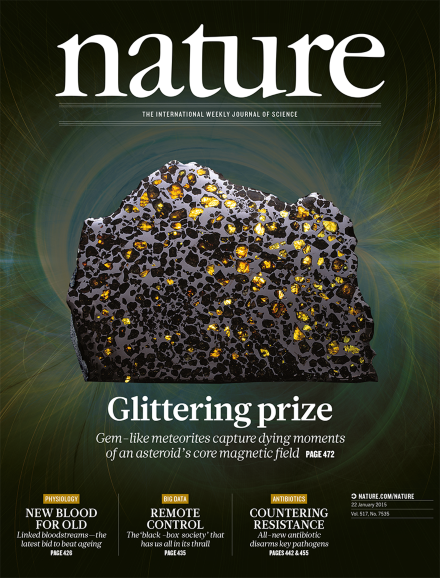Volume 517 Issue 7535, 22 January 2015
Editorial
World View
Research Highlights
Social Selection
Seven Days
News
Correction
News Feature
-
Astronomy: Laser focus
Special:
Comment
Books & Arts
Correspondence
News & Views
-
An irresistible newcomer
Collection:

